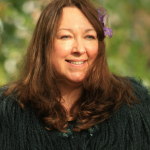In this interview, Jennifer Peace Rhind, author of ‘Listening to Scent‘, ‘Essential Oils‘, ‘Fragrance and Wellbeing‘, and ‘A Sensory Journey‘, discusses the power and use of essential oils. An interesting read for both aromatherapists and anyone interested in aromatherapy and scent.
More information on any of Jennifer’s books can be found on the Singing Dragon website.
Why is scent so effective for changing our mood? What is the relation between scent and the brain? Why do essential oils particularly have such an influence on our brain and emotions?
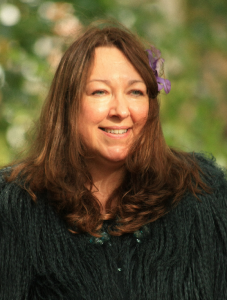
Historically, the use of scent to elicit specific responses is integral to many cultures and life practices; and this is also central to contemporary aromatherapy practices. Odours must be able to evaporate – or exist in vapour form. Once in the atmosphere, odorous molecules are detected by our olfactory organ, thin membranes covered in tiny olfactory hairs, which lie at either side of the bony part of the nasal septum. This extends to the olfactory bulb, the olfactory nerve and the olfactory pathway, which transmits these olfactory signals to the brain. Olfactory neurons project to the limbic system, which is associated with emotions, memories, motivations and pleasure, but where there is no conscious control. However, the neurons also project to the thalamus where sensory integration occurs, the hypothalamus , which monitors and maintains bodily functions; the amygdala, the seat of basic emotion; the hippocampus which is associated with memory; and to the frontal cortex, where recognition of the odour occurs. The frontal cortex is concerned with organising and planning, and the executive, logical and social decisions are made at the prefrontal cortex. When you consider the olfactory connections with these areas, it is unsurprising that scents have such a profound influence on us. Studies have shown that odours can have their effects via several mechanisms – their molecules can act directly and have a pharmacological effect, for example the sedating effect of lavender. However, because we usually experience odours in life situations, smells and memories become inextricably linked, so each smell carries an emotional memory – which can lead to physiological changes, and can influence our conscious responses and behaviour. Additionally, our state of pleasure or displeasure on experiencing an odour will affect our reactions – and this type of response can be influenced by our cultural experiences and learned behaviour. Our expectations can also influence the outcome of exposure to odours – if we believe that rosemary will enhance our memory, then it probably will! The placebo mechanism is present in aromatherapy too!
What traditional use of oils for relaxation do we know about? i.e. I read flower remedies were used by the Aborigines for thousands of years for relaxation?
There are numerous examples, across cultures and ages – and far too many to mention here! One of the earliest examples can be seen in murals in northern Sahara, dating back to 5000BCE, depicting women wearing garlands of flowers.
In ancient Egypt, the scent of the blue lotus was used for its narcotic effects, and to induce an altered state of consciousness at ceremonies and feasts. The ancient Minoans of Crete used lilies, roses and saffron for relaxation, pleasure and healing. The rose and its scent was loved by many peoples across the ages – Cleopatra famously used it in her seduction of Mark Antony; in the Roman Empire there was a feast (Rosalia) to celebrate the flower and its fragrance; and to the Sufis, the rose symbolised spiritual attainment; meditation in rose gardens was practiced. Josephine, the consort of Napoleon Bonaparte was well known for her love of roses and their scent, but she also popularised patchouli – imported with her Kashmir shawls, where the dried leaves repelled insects.
Garlands of scented flowers, such as jasmine and champaca, as well as aromatic oils have been used in India for thousands of years – for relaxation, wellbeing and healing. In Ayurveda, the beautiful scented frangipani flowers (Plumeria species) are used to calm fear and anxiety, and to treat tremors and insomnia. Sandalwood is used in Ayurveda and Tibetan medicine – to lighten and cool the mind, aid concentration, and reduce anxiety and alleviate insomnia. Vetiver was and is used to cool the mind and improve concentration. It is really interesting to see just how many of these aromatics remain important in contemporary aromatherapy. I love the way that aromatics can connect us with the past – times may have changed, but scents are constant!
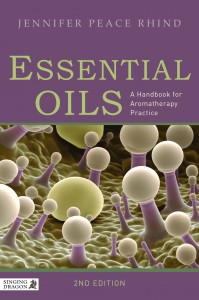
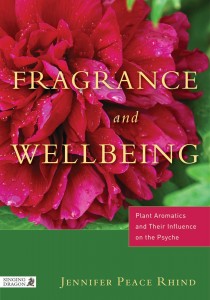
You’re a qualified aromatherapist and you practised as a therapist for 13 years – did a lot of your clients come to see you for help with stress? Is this an increasing problem?
It would be reasonable to say that the vast majority of my clients were stressed – and it manifested in many ways. Some were more aware of the debilitating effects of chronic stress than others, and some sought help when dealing with the immediate effects of personal trauma. For example, I saw many individuals in professions that are considered to be stressful, but there were also many individuals who were in difficult personal relationships, carers, the bereaved, abused, or traumatised in many other ways. I was in professional practice from the late 1980’s until the late 1990’s, and until recently I mentored student aromatherapists undertaking supervised clinical practice. I cannot say for sure that stress is an increasing problem, but stress and mental health awareness has certainly increased since the 1980’s.
We tend to think of popular oils like chamomile and lavender for relaxation – are there any types of oils that are less publicised that people should try? (but still need to stick to H&B sold ones) frankincense, sandalwood?
For relaxation purposes, there is a very wide selection of essential oils and absolutes to choose from – and you should really trust your nose and instincts. If you are strongly attracted to a scent, then that is most likely the best one for you at that moment in time! Some suggestions are sandalwood, which is often used to instil a calm state of mind, focus and clarity, and also to aid meditation, or ylang ylang ‘extra’ which is relaxing, and can free inhibitions and ‘stuck’ emotions – it can even induce a state of euphoria. Clary sage, with its distinctive herbal scent, can have pronounced relaxing effects, and like ylang ylang it is regarded as a euphoric oil – and it certainly merits further investigation regarding its antidepressant potential. All of the citrus peel oils are useful for lifting the spirits while eliciting calmness, as well as the better known sweet orange, mandarin, lemon, lime and grapefruit you might like to try yuzu, combava peel or cedrat. Studies have revealed that bergamot is very useful for alleviating depression and stress, and that sweet orange has ‘acute’
anxiolytic (anxiety relieving) activity. Coriander seed oil is another useful oil for anxiety relief, but in this case we also witness memory-enhancing potential. Some scents such as jasmine are stimulating, but can also be used very successfully for relaxation purposes – they can enhance focus and coordination, while improving mood and self-esteem. Rose is a harmonising scent – comforting and relaxing, but not sedating as lavender and chamomile.
Can oils be mixed together to make your own stress-busting scent?
‘Yes, and the creative aspect of this is therapeutic in its own right, because as we focus on our sense of smell, other distractions are put aside! It is best to build your scent around one oil that you are drawn to, and complement different facets of its fragrance with other oils. For example, the sweetness and softness of rose is e
nhanced by sandalwood. Experimenting is all part of learning what works for you. However, you might like to try bergamot, ylang ylang and lavender – research revealed that this combination reduced physiological responses to stress (such as serum cortisone levels and blood pressure) in patients with essential hypertension.
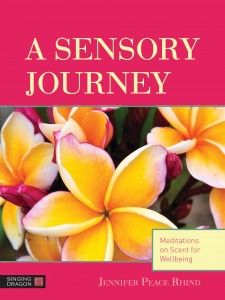
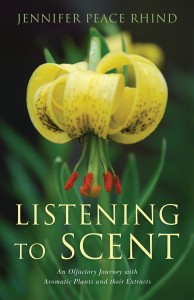
What’s the best way to use oils to beat stress?
Evaporating them in your personal space, inhaling them from an ‘aroma-stick’ or a blotter (an absorbent card) , using them in the shower or bath, and certainly in aromatherapy massage.
Does it depend on the oil as to how it’s best applied? i.e. carrier oil and burner, but which other methods are effective – spritzing some on your pressure points – are there particular points that are good – i.e. the area between your eyebrows as in Ayurveda – ‘the place of stillness’? Massaging some on yourself?
Some essential oils are skin irritants and sensitisers. You might find that, for example, black pepper, ginger, cinnamon or clove would cause skin and mucous membrane irritation in your bath or shower, and even evaporating large amounts potentially could cause irritation to the eyes and sinuses and airways. All essential oils and absolutes, and most importantly the irritant oils, must be diluted in a vegetable oil carrier if they are going to be applied to the skin. For personal use, make sure that you read any safety information from a reputable aromatherapy text or your supplier before using them.
Although a professional massage is recommended, it is certainly possible to prepare your own massage oil, or use a commercially prepared product for self-massage. Self-administered massage is really limited to the abdomen (always clockwise, sweeting strokes), arms and hands, and face. There are a few acupressure points that you can use during facial massage, by pressing firmly and releasing pressure, rhythmically, for a few moments. These include the points on the midline at the hairline and between your eyebrows, the outer points of your eyebrows, and on the upper and lower parts of your cheekbones. Several studies have suggested that the use of essential oils can enhance the effects of other practices, including massage of many types (e.g. therapeutic and remedial, acupressure). For example, aromatherapy massage can stimulate the immune system in comparison with massage alone, and the use of lavender oil in ‘shirodhara’ (where sesame oil is dripped over the ‘third eye’) enhances the state of altered consciousness which this practice produces.
Which everyday smells should we be more aware of that can help us beat stress i.e. freshly cut grass, flowers, bakes bread – should we take more time to stop and be more mindful of aromas? Do you think this is key to putting us in relaxation mode, to bringing more relaxation into our days – are we effectively shutting out senses down in 21st century living because we’re so busy mindlessly rushing through life?
It is my belief that engaging with scents in the natural world is a profoundly enjoyable and healing experience, and possibly essential for optimum health. The Japanese practice of Shinrin-Yoku, which translates as ‘taking in the forest atmosphere’ , or ‘forest bathing’, has many health-enhancing benefits, not least in stress reduction and alleviation of depression. Research at the Duftgarten (fragrant garden) at the University of Natural Resources and Applied Life Sciences in Vienna has shown that the scents of blooming plants increased calmness and alertness, even at night when the visual impact was reduced. Yes, we should certainly make the time to experience the wonderful fragrances that surround us – there is little doubt that this practice improves our wellbeing! Try smelling fresh culinary herbs in the garden or at a plant nursery, or the amazing scents of dried herbs and spices as you are cooking. When you smell essential oils and absolutes – do so with awareness and enquiry. You might even like to meditate on scent. All of these activities can awaken the senses, aid alertness, or stabilise, enhance or modify our moods, decrease anxiety and tension, or evoke memories.
Are there any new developments in aromatherapy? What will it look like i n the future? More advanced make up, new types of oils?
We are seeing better ways to deliver aromas, such as ‘aromasticks’, and also some ‘patches’ designed to deliver essential oils through the skin. In the short history of modern aromatherapy, the profession has come a long way – despite criticism from orthodox health care practitioners and some members of the scientific and academic communities. However, it is perceived in many ways – from a luxurious pampering treat to a quasi-medical treatment, and aromatherapy practitioners are found in expensive spas and salons, complementary healthcare clinics, and as volunteers in for example care homes and hospices. Aromatherapy might be seen as the preserve of those who can afford to pay, and paradoxically of such little value that health services will not pay for it! I do not know what will happen in the future – that is probably in the hands of the educators, the practitioners and those who make the rules about the profession and the use of essential oils and other plant aromatics! I believe that important factors in its future are the willingness to build on the evidence base, maintain a fundamentally holistic approach, and embrace the diversity of practices. We need to remember that aromatherapy is a unique healing modality – the only one that is based on the therapeutic use of aromatic oils and the sense of smell.There are many ‘new’ essential oils coming on the market – some have been well-researched researched, others less so – and they will without doubt find their niche in aromatherapy and phytocosmetology. Some examples are Fragonia, Perilla (shiso mint), and Anthopogon (rhododendron); and there are many beautiful variants of old favourites such as rose becoming more readily available.’need to remember that aromatherapy is a unique healing modality – the only one that is based on the therapeutic use of aromatic oils and the sense of smell.
More information on any of Jennifer Peace Rhind’s books can be found on the Singing Dragon website.
A shorter version of this interview was published in ‘Healthy’ magazine 2014.
 A multisensory approach to facilitating relaxation in cancer care using aromatherapy, touch and voice, the HEARTS process – created by Ann Carter – offers a new way to help patients achieve a state of relaxation and calm as quickly and easily as possible.
A multisensory approach to facilitating relaxation in cancer care using aromatherapy, touch and voice, the HEARTS process – created by Ann Carter – offers a new way to help patients achieve a state of relaxation and calm as quickly and easily as possible. Pam Conrad, author of
Pam Conrad, author of 



